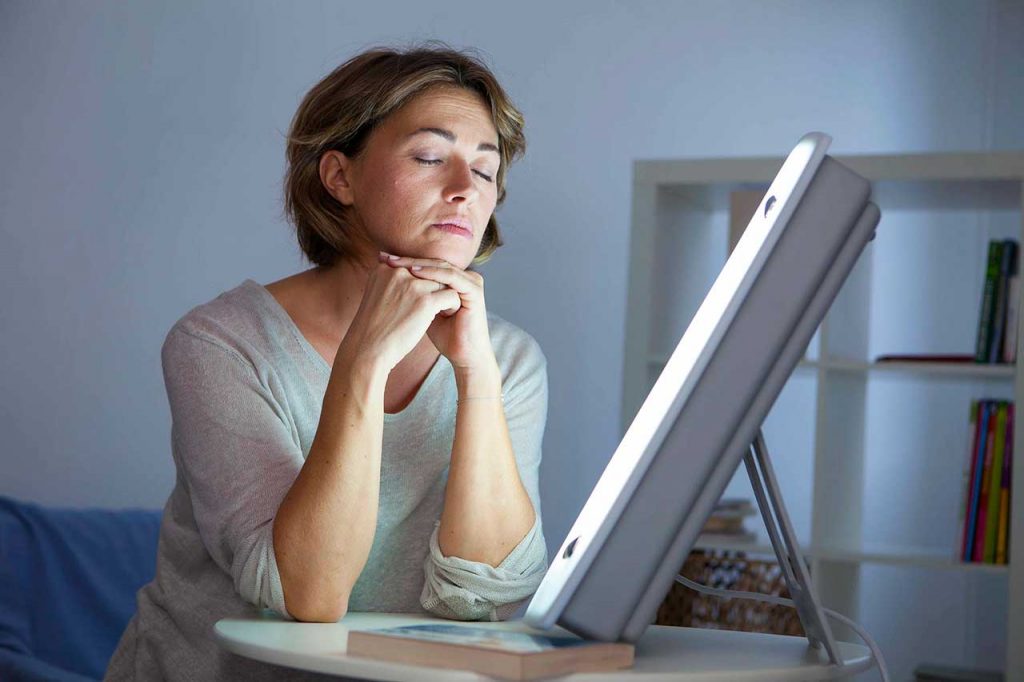Each winter season about 10 percent of us experiences seasonal affective disorder (SAD). It can be seriously debilitating condition and can manifest a range of symptoms, including severe depression. So try these natural fixes before symptoms get out of hand.
As many of us rarely spend any time outdoors (so our only light exposure is from lightbulbs and fluorescent strips), SAD is yet another syndrome that is directly related to living in the developed world. Only a relatively a few years ago 75 percent of the population used to work outdoors in natural light, as opposed to just 10 percent now. People living in cities tend to have more symptoms as they often work indoors and see very little daylight.
Symptoms usually begin in late autumn as the days shorten and the light diminishes, and often persist right through to late February or March, eventually disappearing when spring arrives. But, if you think about this year, we had virtually no spring and seemed to go straight from winter into summer. This led to a much higher number of people presenting in my clinic with severe SAD symptoms in 2013.
Light Therapy
Melatonin and serotonin are two key neurotransmitters that control our energy levels. Serotonin is produced in the daytime, while our melatonin levels increase in the evening to help us feel sleepy. When we wake up to the daylight, our serotonin levels rise, which keeps us awake and focused. In the dark winter months, with diminished light exposure, the body produces excess levels of melatonin making us sleepy and increasing our risk of depression.
One of the best-proven SAD treatment strategies is the use of light boxes which mimic the light levels that we get in the daytime in summer, boosting our serotonin levels. Sufferers using medically approved boxes often report improvements after just a couple of weeks. Lightboxes emit different levels of light (lux), which determine how long you need to spend in front of it each day. They are also really easy to use; you can place your box on a desk while you are working, for example.
Feel Good Fitness
Exercise is a vital stimulant when feeling low and helps the release of those happiness boosting chemicals the endorphins. It is far healthier to exercise outside rather than in a gym overall, and the bonus is that you will also be exposing yourself to natural outdoor light, thus restoring your circadian rhythms at the same time.
Natural Energy
There is no doubt about it, stimulants are drugs which mess up our systems in numerous ways. As soon as the weather begins to get cold, we suddenly become more attracted to stimulants such as coffee to wake us up, and refined sugar to keep us happy and suppress uncomfortable feelings (emotional eating is a prime example of this). And then, after all that stimulation we turn to the insidious yet socially acceptable drug alcohol, with a glass of wine or two to help us relax in the evenings. Use of these drugs instates a roller-coaster ride of energy swings which lead to weight gain, depression, hormonal imbalance and more. Substitute these stimulants with more natural, nutrient-rich whole foods that your body can make sustainable energy from, and which will carry you happily through your day.
Structured Joy
One of the biggest issues with any form of depression, including that triggered by SAD, is that we begin to feel completely overwhelmed and it seems as though we can’t cope with the demands of our daily lives. Once you have begun to use the strategies outlined above, you will begin to feel a bit more in control, so now is the time to gradually set manageable goals. For example, if you have decided to eat more healthily, you might start looking for recipes online that inspire you. Commit to preparing one healthy dish per day, and stick to it. Routine like this is a very useful tool in helping to eradicate depressive states. Try to make your goals support your wellbeing. So, you might consider committing to mindfulness meditation (proven to help alleviate depression) twice per day, for just 20 minutes at a time. You will find great (totally free).
Complementary therapies
Homeopathy, acupuncture, cognitive behavioral therapy, nutrition, massage and more have been shown to really help people feel better and get better.
Do I have it?
The most common SAD symptoms include:
- Lethargy, lacking energy and feeling demotivated a lot of the time
- Suffering from low energy during the day, experiencing disturbed nights and needing more sleep
- Feeling of anxiety and an inability to cope Social problems, moodiness and not wanting to see people
- Feelings of sadness, gloom, depression, and despondency for no apparent reason
- Weight gain, increased appetite, craving carbohydrates and foods containing sugar
